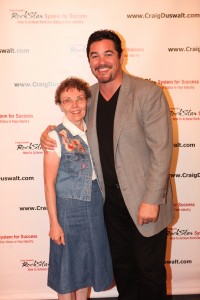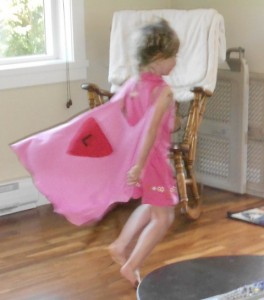 Just recently, I got to meet–and have my picture taken–with actor Dean Cain who played Superman in the tv series Lois and Clark. Good thing he wasn’t dressed as Superman; I’d have been even more excited.
Just recently, I got to meet–and have my picture taken–with actor Dean Cain who played Superman in the tv series Lois and Clark. Good thing he wasn’t dressed as Superman; I’d have been even more excited.
Sometimes, the roots of careers can be found in how a child plays, so I asked Dean if, as a young child, pretend and imaginative play was a big part of how he played. He shared that as a child he would combine plastic army figurines and blocks and mix them up together. Then, he would spread them out and create stories to go along with how they happened to be. He said that he used to do this for hours.
Children are all unique, with their own strengths, interests and challenges. They will play differently, too. It’s fascinating to find out about the chef who wanted an easy-bake oven even though it was a girls toy, the Disney designer who loved to draw, the figure skater seen going round and round in circles as a toddler in home movies. Looking back, we can see the hints of what these people would choose to do as adults in the way they played as children.
 Too often, we dismiss what children do as “child’s play”. To kids, their play is incredibly important. Play is how children interface with the world. Thru play they learn, cope, and figure out themselves and the world. They do not limit their play to toys, but use whatever is available, often scaring their parents and caregivers. Kids will play by themselves or with others, with real objects or imaginary ones. Play is children’s work and, to kids, work can be play. Whether it’s helping us rake leaves, wash dishes, or pretending to fly as a superhero, kids will work and play hard.
Too often, we dismiss what children do as “child’s play”. To kids, their play is incredibly important. Play is how children interface with the world. Thru play they learn, cope, and figure out themselves and the world. They do not limit their play to toys, but use whatever is available, often scaring their parents and caregivers. Kids will play by themselves or with others, with real objects or imaginary ones. Play is children’s work and, to kids, work can be play. Whether it’s helping us rake leaves, wash dishes, or pretending to fly as a superhero, kids will work and play hard.
One of the best ways to support children is to make sure they have time and opportunity to play. How will your child play today?
